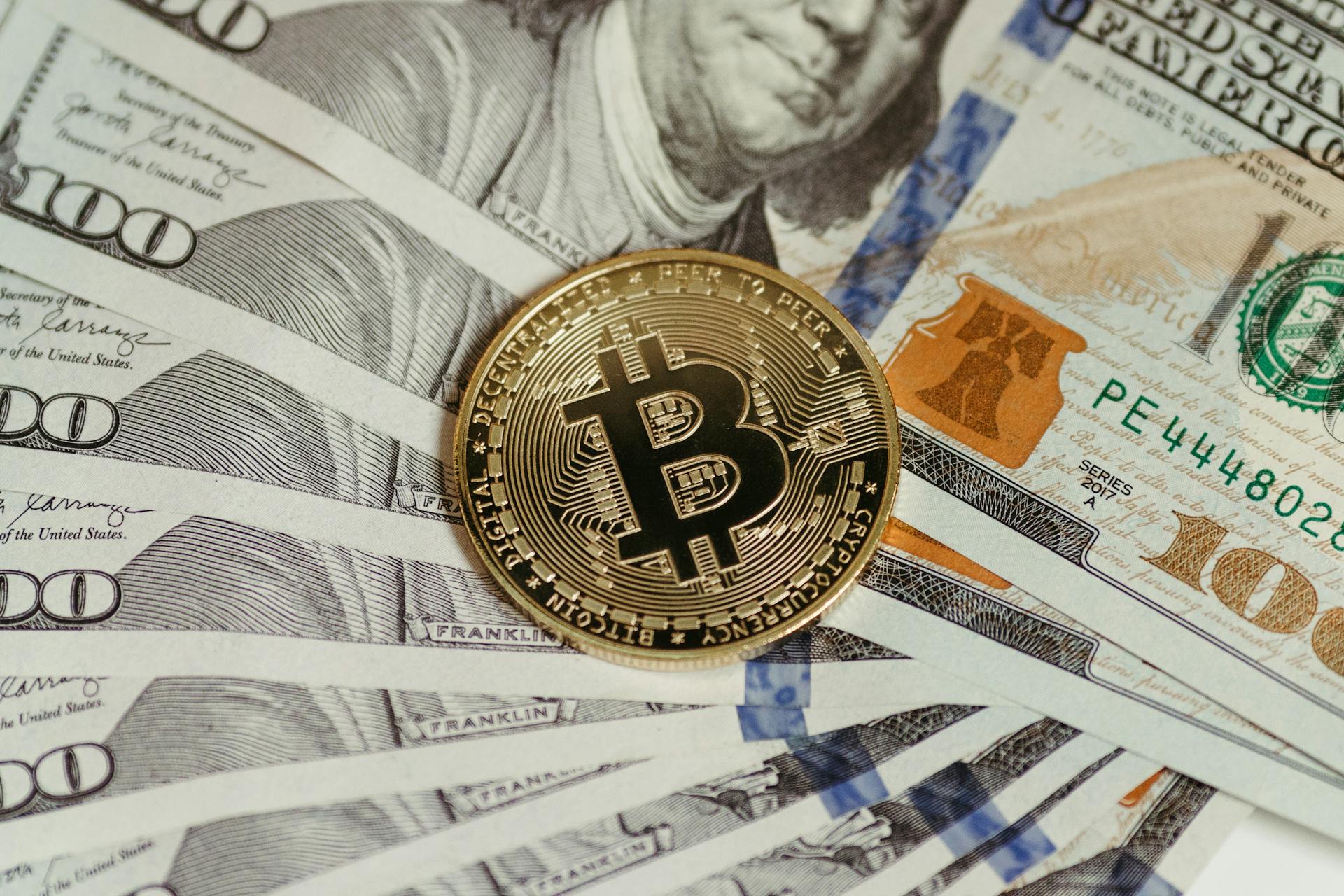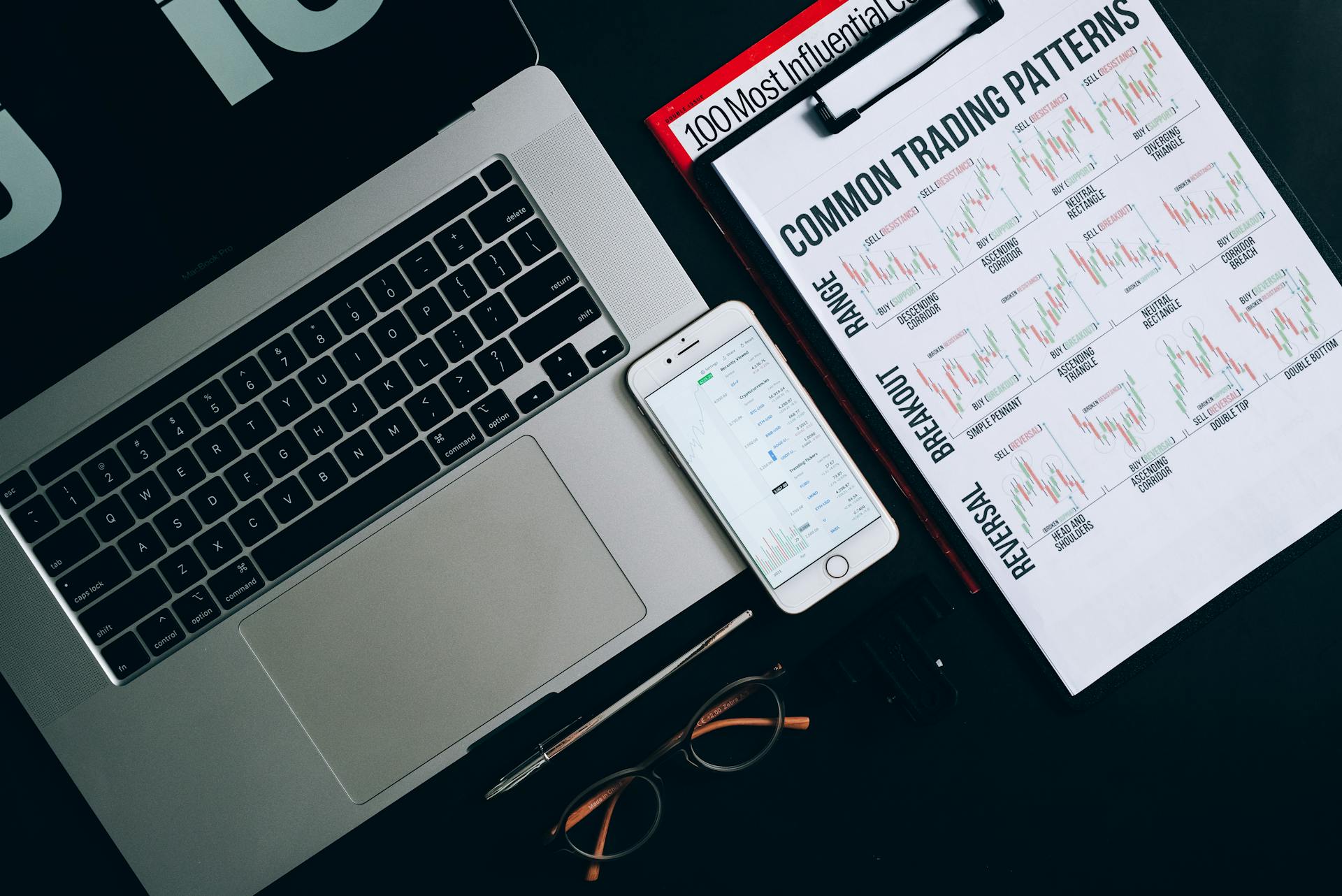
Algorithmic trading and Direct Market Access (DMA) can seem like complex and intimidating concepts, but they're actually quite straightforward once you understand the basics.
DMA allows traders to send orders directly to an exchange's matching engine, reducing latency and increasing the speed of execution.
This direct access to the market is made possible by specialized software and hardware that can communicate with the exchange's systems in real-time.
The key advantage of DMA is that it enables traders to execute trades at the best available price, without the need for intermediaries or market makers.
By using DMA, traders can also take advantage of high-frequency trading strategies that rely on extremely fast execution speeds.
Readers also liked: Direct Finance
What Is Algorithmic Trading?
Algorithmic trading is a fascinating topic that's been around for decades. It involves using computer algorithms to automate trading decisions and processes, analyzing numerous market variables to identify trading opportunities that meet predetermined criteria.
These algorithms can execute trades much faster and more efficiently than human traders, thanks to their ability to process vast amounts of data in real-time. For example, a simple algorithm might be programmed to place a buy order when a stock's 50-day moving average surpasses its 200-day moving average.
A fresh viewpoint: Algo Trading Algorithms
Historically, algorithmic trading emerged with the advent of electronic markets in the late 20th century. The New York Stock Exchange launched its first electronic trading system, the Designated Order Turnaround (DOT) system, in 1976.
Algorithmic trading has come a long way since then, thanks to the advent of big data and artificial intelligence (AI). Big data technologies enable the analysis of vast datasets, expanding the range of market variables and patterns that can be considered. AI further enhances this capability by allowing algorithms to learn and adapt using machine learning models.
Here are some common types of algorithms used in trading:
- Market-Making Algorithms: These algorithms place both buy and sell orders to capture the spread—the difference between the bid and ask price.
- Statistical Arbitrage Algorithms: This strategy involves the use of statistical methods to explore price anomalies in related financial instruments.
- Trend-Following Algorithms: These algorithms identify and exploit momentum by tracking the direction of asset prices.
- Arbitrage Algorithms: These aim to exploit price differences of the same asset across different markets or instruments.
Algorithmic trading accounts for a significant portion of daily financial market volumes due to its efficiency and ability to process complex strategies at high speed.
Benefits and Advantages
Direct Market Access (DMA) offers numerous benefits and advantages for traders, particularly those who engage in algorithmic trading. By eliminating the need for intermediaries, DMA can lead to cost savings on commissions and spreads.
DMA provides traders with full transparency of an exchange's order book and all of its trade orders. This transparency allows for precise decision-making and order execution, thereby reducing slippage—a common issue where the order is executed at a less favorable price than anticipated.
With DMA, traders can interact directly with the full depth of the market, as opposed to receiving filtered or aggregated data through intermediaries. This direct approach is crucial in high-frequency trading environments where time is of the essence.
DMA also enables faster order execution and increased competitiveness, thanks to its ability to minimize delays associated with traditional broker-mediated transactions. By allowing traders to send their orders directly to the electronic order books of exchanges, DMA optimizes trading speed and efficiency.
Here are some key benefits of DMA for algorithmic trading:
- Reduced latency in trade execution
- Enhanced market transparency
- Improved accuracy in execution
- Greater order control
- Access to multiple trading venues
- Reduced trading costs
By accessing the markets directly, traders can minimize brokerage fees and allocate more capital towards actual trading activities. This cost-effectiveness enhances the overall return on investment and allows for more aggressive or frequent trading strategies without incurring prohibitive costs.
Trade Execution and Technology
Trade execution is a critical aspect of algorithmic trading, and Direct Market Access (DMA) plays a key role in it. Through an online trading platform, a trader places an order to purchase a security, which is then recorded in an electronic trading book and communicated to exchange servers.
The technology and infrastructure required to develop a DMA trading platform can be expensive to build and maintain, which is why companies often combine this service with access to advanced trading strategies like algorithmic trading. This is done through agreements between DMA platform owners and sponsored firms.
DMA provides ultra-fast order execution, reducing latency and improving trading efficiency. This is especially beneficial for retail traders who can leverage DMA to implement algorithmic trading strategies that benefit from reduced latency and improved market access.
For your interest: Gas Algo Trading Software
What Is an Order?
An order is a request to buy or sell a financial instrument, such as a stock or commodity, at a specific price or better.
Direct market access orders allow traders to place trades directly with an exchange, cutting out the need for a brokerage intermediary.
Transparency and efficiency are key benefits of direct market access orders, enabling traders to get better pricing on their trades.
Orders can be executed in various ways, including through direct market access or by going through a brokerage.
For your interest: How Do Bond Traders Make Money
Trade Execution
Trade execution is the process of buying or selling a security, and it's crucial to understand how it works. Trades are executed in Direct Market Access (DMA) through an online trading platform.
The process starts with a trader placing an order to purchase a security, which is then recorded in an electronic trading book. The information is communicated to exchange servers, and the order is received by the stock exchange.
A direct market access order is a trade placed directly with an exchange on its order books, without an intermediary brokerage. This allows for transparency, efficiency, and better pricing for the trader.
Additional reading: Access Bank Nigeria Stock Price
DMA provides ultra-fast order execution, reducing latency and improving trading efficiency. This is especially beneficial for retail traders who can leverage DMA to implement algorithmic trading strategies.
Here's a breakdown of the trade execution process in DMA:
- Order is placed through an online trading platform.
- Order is recorded in an electronic trading book and communicated to exchange servers.
- Order is received by the stock exchange and fulfilled when the trader's purchase price matches a seller's price.
By understanding the trade execution process, traders can make informed decisions and take advantage of the benefits offered by DMA.
Technology
Developing a direct market access trading platform can be expensive to build and maintain. The technology and infrastructure required to support this platform can be costly.
Direct market access trading platforms are often built by sell-side firms who offer them to buy-side firms. Examples of buy-side entities include hedge funds, pension funds, mutual funds, life insurance companies, and private equity funds.
These platforms require significant investment in technology and infrastructure, which can be a barrier to entry for some firms. The cost of development and maintenance can be a challenge.
Sell-side firms that offer direct market access sometimes combine this service with access to advanced trading strategies. This can include algorithmic trading, which can help firms to automate their trading activities.
The agreements between direct market access platform owners and sponsored firms outline the services offered and the stipulations of the agreement.
Discover more: Buy Stop Limit Order Example
Sources
- https://corporatefinanceinstitute.com/resources/career-map/sell-side/capital-markets/direct-market-access-dma/
- https://pdfcoffee.com/barry-johnson-algorithmic-trading-amp-dmapdf-9-pdf-free.html
- https://www.investopedia.com/terms/d/directmarketaccess.asp
- https://www.vestr.com/glossary/direct-market-access-dma
- https://paperswithbacktest.com/wiki/direct-market-access-uses-benefits
Featured Images: pexels.com


